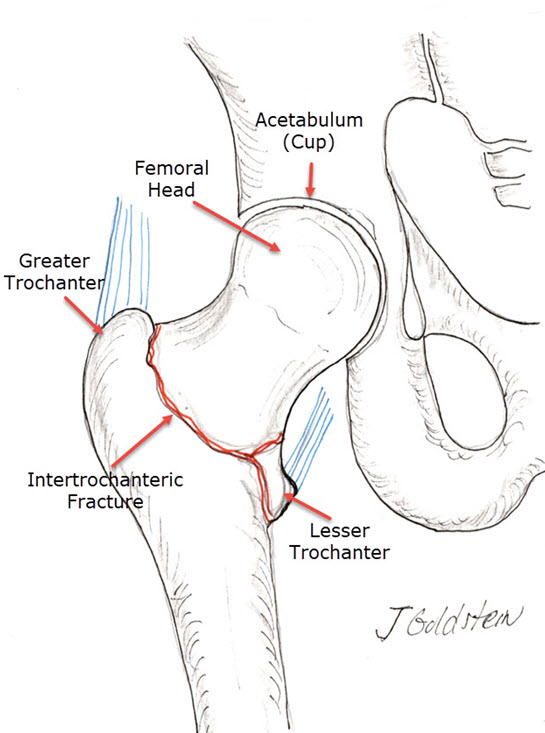Fracture Treatment
Fractures of bone may be minor, or a serious threat to life and limb. Severity depends on fracture location, complexity, joint involvement, and the presence of a wound at the fracture site. Simple fractures may be treated with as little as a rigid shoe, while complex fractures often require surgical fixation. This depends on patient age, general health, fracture pattern, site and stability, and functional status of the patient. Often the decisions involved in Orthopedic Fracture Treatment are best made with the help of both patient and family. They are influenced by patient age, mobility, and functional status as well as functional requirements. Fractures or breaks of bone are one and the same. Displacement is generally a large determinant for the need to reduce the fracture (replace the bone fragments in proper alignment). If the fracture enters a joint surface or disturbs the competence of weight-bearing bones, this will likely enter into the decision process between surgical fixation and cast treatment. In children, a fracture which involves the growth plate may disturb or halt the growth of a long bone or disturb joint function in later life. This is often an important determinant in initial treatment and follow-up care.

Emergency Care
In general, immediate treatment of fractures requires immobilization whether or not surgical treatment is required. The severity of the trauma, displacement, and instability will dictate the need for surgical or cast treatment. If the fracture is simple, or if severe swelling is expected, then splint immobilization is most appropriate. In general, immediate casting is dangerous and unnecessary. If this is needed, hospital admission is indicated for observation for swelling. The risk of swelling and resultant compartment syndrome, which may permanently damage muscles and nerves especially in the forearm and lower leg, are significant especially with fractures here. When splint immobilization is only needed, a week of elevation and ice treatment will help the swelling to reduce and thereby minimize the risk of cast placement thereafter.
Cast Treatment
Cast treatment of fractures is common when operative fixation is not needed. Casts usually hold the joint above and below the fractured part so that the cast effectively supports and aids the healing process. Casts may be made of Plaster of Paris or fibreglass. Fibreglass is water-resistant while plaster will melt if wetted. The padding between the skin and the cast provides comfort, but if this becomes wet, it dries slowly and encourages skin overgrowth with fungal organisms causing itching and skin breakdown. Gortex liner is expensive but allows a fibreglass cast to be immersed daily in water. This minimizes skin irritation and itching, and even allows swimming in freshwater. Casts need to be protected in order to provide support until the limb is healed enough to allow removal. In the case of a walking cast, a cast shoe should be worn at all times. All casts should be kept clean and dry, and scratching inside with instruments should be avoided.
Fracture Reduction
Closed reduction of fractures means manipulation of the fracture fragments to realign them without surgically opening the site. This may be accomplished with local block analgesia or general anaesthesia depending on the fracture site and severity. Open reduction and internal fixation of fractures (operative treatment of fractures) require surgical exploration and generally fixation with pins, plates, screws, or intramedullary (within the bone) device. The aim of internal fixation is to provide stability, improve joint motion near the fracture, and allow early weight-bearing in the lower limb, or rapid functional use in the upper extremity. In many instances, the decision between the closed and open reduction of fractures depends on multiple factors. These include patient age and agility, fracture site and extension into a joint, and weight-bearing on the affected part. Cast immobilization of the fracture is often used. This holds the fracture fragments aligned without implanted hardware. This also lowers the risk of infection and provides easy access to the open wound. These fractures are in general more prone to delayed healing and infection.
Open Fractures
Open fractures are those with a laceration which enters the fracture site. These are more severe than closed fractures. These need to be cleansed in the Operating Room rapidly and stabilized to lower the risk of infection. Hospitalization and intravenous antibiotic treatment are required. In this circumstance, the external fixation of the affected fracture is often indicated or other internal fixation. This is dependent on open fracture severity and grade of contamination as well as the bone involved.
Functional Recovery
In general, fracture healing is encouraged by the use of the extremity. This helps nearby joints maintain motion, and aids normal limb function, maintains bone mass, and general well being. Effective fracture care combines patient desires and needs with fracture location and anatomy and socioeconomic factors. The aim of any well-designed fracture care is to allow the earliest possible use of the fractured part without complicating healing. In addition, every effort should be made to minimize pain and restore as normal function as possible.
Complications
Complications of fracture care include non-union (failure to heal), malunion (healing in improper alignment), arthritis (if the fracture involves a joint), or infection (after open fracture or following open reduction). Complications are minimized by proper management. Initially, fractures which do not require closed or open reduction should be splinted, elevated and iced to allow swelling to reduce. After one week, swelling is generally minimal, and definitive cast treatment may be performed. Even when surgical fixation is the best long term option, a week of rest is helpful in reducing swelling and minimizing surgical complications. Surgical treatment is thus best instituted within the first 24 hours or after one week when swelling is at a minimum.
Compliments of Sports Medicine and Orthopaedics, East Providence, Rhode Island
